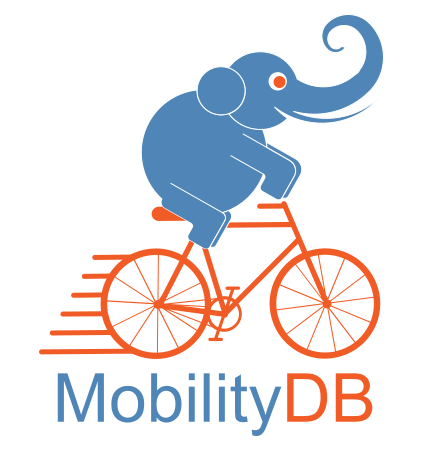2024-09-24
Abstract
MobilityDB is an extension to the PostgreSQL database system and its spatial extension PostGIS. It allows temporal and spatio-temporal objects to be stored in the database, that is, objects whose attribute values and/or location evolves in time. MobilityDB includes functions for analysis and processing of temporal and spatio-temporal objects and provides support for GiST and SP-GiST indexes. MobilityDB is open source and its code is available on Github. A binding for the Python programming language is also available on Github.

MobilityDB is developed by the Computer & Decision Engineering Department of the Université Libre de Bruxelles (ULB) under the direction of Prof. Esteban Zimányi. ULB is an OGC Associate Member and member of the OGC Moving Feature Standard Working Group (MF-SWG).

The MobilityDB Manual is licensed under a Creative Commons Attribution-Share Alike 3.0 License 3. Feel free to use this material any way you like, but we ask that you attribute credit to the MobilityDB Project and wherever possible, a link back to MobilityDB.

Table of Contents
- 1. Introduction
- 2. Set and Span Types
- 3. Bounding Box Types
- 4. Temporal Types
- 5. Temporal Types: Generic Operations (Part 1)
- 6. Temporal Types: Generic Operations (Part 2)
- 7. Temporal Types: Alphanumeric Operations
- 8. Temporal Types: Spatial Operations
- 9. Temporal Types: Analytics Operations
- 10. Temporal Types: Aggregation and Indexing
- 11. Temporal Network Points
- A. MobilityDB Reference
- B. Synthetic Data Generator
List of Figures
- 3.1. Multiresolution grid on Brussels data obtained using the BerlinMOD generator. Each cell contains at most 10,000 (left) and 1,000 (right) instants across the entire simulation period (four days in this case). On the left, we can see the high density of the traffic in the ring around Brussels, while on the right we can see other main axes in the city.
- 6.1. Insert operation for temporal values.
- 6.2. Update and delete operation for temporal values.
- 6.3. Modification operations for temporal tables in SQL
- 8.1. Visualizing the speed of a moving object using a color ramp in QGIS.
- 9.1. Difference between the spatial and the synchronous distance.
- 9.2. Sampling of temporal floats with discrete, step, and linear interpolation.
- 9.3. Changing the precision of temporal floats with discrete, step, and linear interpolation.
- 9.4. Multidimensional tiling for temporal floats.